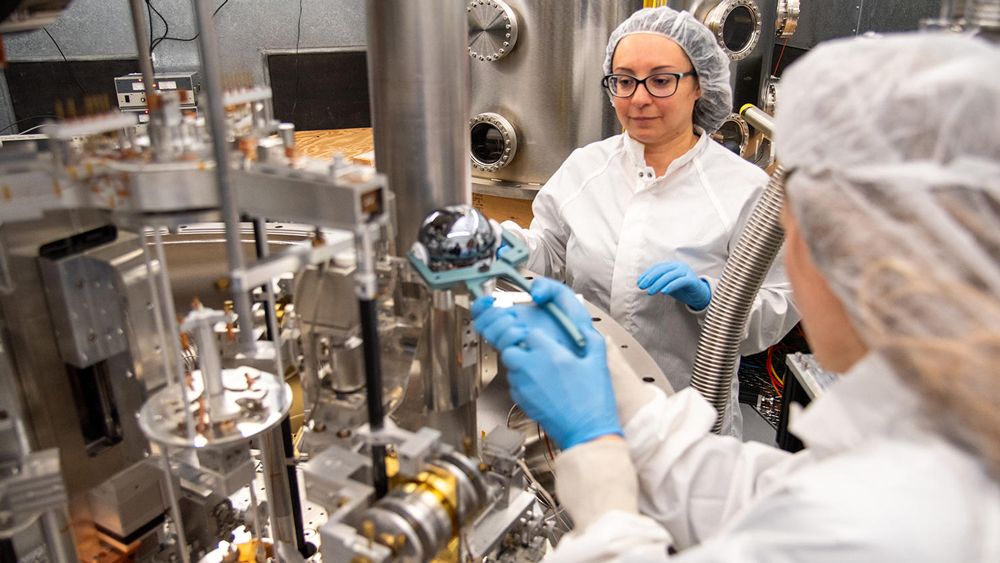Right now, the U.S. and Germany have different approaches to defining, or “realizing” as the researchers call it, the kilogram. Here, NIST researcher Darine Haddad looks on as German researcher Beatrice Rodiek places a sphere on NIST’s highly accurate weighing machine, known as the Kibble balance. The goal of the research is to get closer to the same definition using the different methods. Credit: B. Hayes/NIST
In 2018, the world agreed to redefine the kilogram. Instead of being pegged to the mass of a physical object in a vault in France, the kilogram is now defined by a few fundamental constants in nature.
|
ADVERTISEMENT |
This means researchers no longer have to worry about a physical object that can decay or change over time, potentially throwing the world’s measurements into chaos.
Like any unit of measurement, the kilogram needs to be the same for everyone, all the time. Theoretically, it can now be measured in any lab in the world using the Planck constant, which defines how small things can be. That measurement can be shared with anyone who needs to find out the mass of an object.
But in reality, it’s not quite that simple—yet.
…

Add new comment